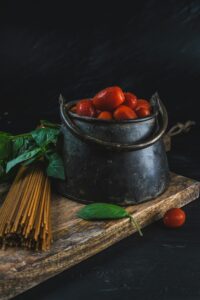For orientation training
🔹 Introduction: Why the Drum Format Matters
In the global tomato paste trade, particularly in B2B and industrial supply chains, tomato paste in drum is the standard for large-volume transactions. Steel drum packaging, often with aseptic lining, ensures stability, extended shelf life, and suitability for food processing plants worldwide.
But not all drum-packed tomato paste is created equal. As a professional buyer or processor, you must evaluate Brix level, packaging technology, and country of origin — three key indicators that impact product quality, cost-efficiency, and regulatory compliance.
🔸 1. Understanding Brix: The Core Quality Indicator
Brix is a measurement of soluble solids, primarily sugars, in the tomato paste. It directly correlates with concentration and processing method.
| Brix Level | Type | Common Use | Notes |
|---|---|---|---|
| 28–30% | Double Concentrated | Sauces, ketchup, canning | Industry standard for export |
| 30–32% | High Concentrated | Further concentration needed, B2B supply | Higher yield, lower water |
| 36–38% | Triple Concentrated | Specialized applications | Higher cost, used sparingly |
Tip for buyers: Always request a Certificate of Analysis (COA) and verify Brix using a refractometer upon receipt.
🔸 2. Packaging: Why Aseptic Drum Is the Industry Benchmark
The most common and safest industrial packaging is:
- Inner Bag: Aluminum foil or multilayer aseptic bag
- Outer Drum: Epoxy-coated steel drum (220L standard)
- Sterilization: Aseptic filling (steam or ultra-high temperature)
Advantages:
- Shelf life: Up to 24 months without preservatives
- Stackability: Ideal for palletized shipment (4 drums/pallet)
- Hygiene: Sealed, oxygen-free environment prevents microbial growth
Avoid suppliers who use non-aseptic filling or low-gauge drums that may compromise structural integrity during ocean transport.
🔸 3. Origin: How Source Affects Quality and Compliance
Origin isn’t just about logistics — it also impacts taste, color, residue standards, and export documentation.
✅ China
- Strength: Cost-effective, high production capacity (esp. Xinjiang)
- Common Brix: 28–30%, 30–32%
- Compliance: FDA, Halal, ISO; buyers should confirm pesticide residue limits
✅ Turkey
- Strength: Proximity to Europe and MENA, fruity flavor profile
- Caution: Variable pricing and season-dependent volumes
✅ Italy/Spain
- Strength: Premium product, consistent quality
- Caution: Higher pricing, limited in industrial 220L format
Pro tip: Match product origin with your target market’s taste preference and regulatory threshold (e.g., Sudan Red, Ochratoxin A, Lead content).
🔸 4. Additional Quality Control Points
- Color (L, a, b*)**: High a* value indicates better red intensity
- pH: Should be 4.0 ± 0.2 for microbiological stability
- Foreign Solids: Should not exceed 0.03%
- Heavy Metals: Must comply with Codex Alimentarius / EU / USFDA standards
- Pesticide Residue: Ensure <10 ppb levels for sensitive markets (e.g., Japan, EU)
🔸 5. Supplier Audit Checklist
Before placing a bulk order, conduct:
- Factory audit (in-person or via third party)
- Production certificate review (HACCP, BRC, Halal, Kosher)
- Container load verification (photos or live loading inspection)
- Sample testing: Lab check for Brix, pH, pesticide, and mold
🔹 Conclusion: The Right Paste Saves Time and Money
Choosing the right tomato paste in drum is not just a procurement task — it’s a strategic decision. A well-sourced, correctly packed, and regulation-compliant paste means fewer delays, lower production cost, and consistent product quality.
At Taichy Food, we offer 220L aseptic drum-packed tomato paste with customizable Brix levels and export-ready certification. Samples and COAs are available upon request.
📧 Contact: tf1@taichysupply.com
🌐 Website: www.taichytomato.com

